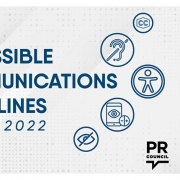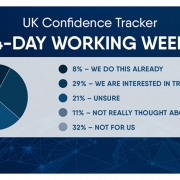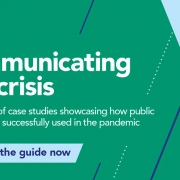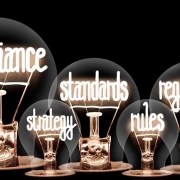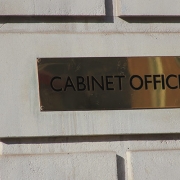Email marketing: Top industry trends for 2022
This is a guest post from April Mullen, director of brand and content marketing at SparkPost.
There are a lot of moving parts when it comes to marketing, especially in email. In order to keep ahead of fierce competition, it is vital that brands are on top of changes within the industry. Failing to adhere to new practices can damage brand trust and reputation and risk losing subscribers.
Generating more sophisticated email content can help increase customer engagement. This, in turn, leads to better deliverability, more conversions, and a stronger community for your brand.
With these challenges in mind, here are some key trends for this year, and how marketers can stay ahead of the curve.
1) Email design: the balance between engagement and accessibility
On the one hand, emails need to stand out with bold, engaging designs. But at the same time, they need to be easy to engage with. Are these two key email trends compatible? Sure! They just require marketers to be a little more thoughtful about how they construct their communications.
Dark mode: Over the past couple of years more and more marketers have been experimenting with dark mode in their emails. They are responding to consumers who like the option for a number of reasons.
Firstly, it’s easier on the eyes – especially in low light reading environments. Secondly, low brightness means more battery life can be preserved on mobile devices, and lastly some people just prefer it that way.
Dark mode should be treated like an email necessity, not an afterthought. If your designers are worried that it might limit their creativity, they needn’t be. In many ways it has the opposite effect. More thought goes into logos, brand colours, and layouts when considering dark mode.
Accessibility: It’s a golden rule of email marketing that messages should be able to be read by everyone no matter where they are, what device they are using or what their ability level is. But there is still some catching-up for marketers to do to achieve this. Not complying with accessibility can cause brand reputation challenges.
15% of the world’s population experience some form of disability. Why should they be prevented from interacting with your emails for the sake of a few lines of code and thoughtful design? Ensuring that minimum font sizes are used and that the text is properly aligned, among other tweaks, to meet accessibility requirements in 2022.
Emojis: Everyone loves a good emoji and for the most part, they work well in email – adding a sense of fun that is universally understood.
In 2021 more marketers began using emojis in email subject lines and headlines in a rather careless way. Some forgot that if emojis replace actual words, the overall message won’t make sense if images are blocked or won’t load.
The key, if you are going to use emojis in your subject line, header or in the main body of the text (which is good for mobile viewers as copy space is often limited), is to test and test again for effectiveness before you press send.
GIFs: A properly executed GIF in a marketing email can be a very powerful way of expressing brand values in a light-hearted way. But they must be used in the right way and within the right context.
Marketers need to ensure that GIFs used:
– Aren’t too flashy or overwhelming by having smooth transitions between each frame
– Include a static fallback just in case the GIF doesn’t load
– Always include ALT text for screen readers
2) Privacy changes continue to rock the boat
Privacy continues to be a hot topic for email senders, especially marketers. As the demand for relevant and personalised email increases in 2022, the barriers to collecting the actionable data necessary to meet that demand will increase as well. The loss of third-party cookies and new features, such as Apple’s Mail Privacy Protection, are likely only the beginnings of a paradigm shift that will continue to drive marketers to rethink data collection and usage practices.
Loss of third-party cookies: Third-party tracking involves data that’s not owned by the website you’re on – and it’s used after you leave. Let’s say you’re on Currys and look at a Camera, and then you go to John Lewis and see that same camera in an ad in your sidebar. That’s a third-party cookie tracking your internet habits. Firefox and Safari no longer support third-party tracking, and Google has announced they’ll follow suit with plans to sunset third-party cookies in 2022. The demise of third-party cookies puts a tailwind behind channels that leverage first-party data – email being the most pervasive channel using first-party data. We should all be gearing up for more investment in email and SMS because owned data is about to be more valuable than ever.
Apple Mail Privacy Protection (MPP): Back in June 2021, Apple announced MMP would be coming to their Mail app on all compatible Apple devices. According to Apple, “Mail Privacy Protection stops senders from using invisible pixels to collect information about the user. It prevents senders from knowing when they open an email and masks their IP address, so it can’t be linked to other online activity or used to determine their location.”
At a very high-level, since MPP will prefetch all images in an email, senders will need to be aware of the following:
– Open rates will be inflated
– Open times will be random and unreliable
– Device information will be unavailable
– User location will be approximated
As 2022 progresses, upwards of 50% of open data will become unreliable and no longer useful as a success metric. This means that marketers will need to take a more holistic approach to measuring the success of email programs. Below are some example alternative success metrics that senders can use:
– Clicks
– Conversion
– Engagement from other channels, such as your mobile apps
3) Generating personalised content with limited resources
Creating an engaging, interesting and personalised email can be a challenge especially if a marketer is limited in terms of time and resources. There are however a few shortcuts that they can employ to speed the process up.
Personalisation: Personalised content used to be the icing on the top of the cake in email marketing. In 2022 it is arguably the whole cake. With brands having to contend with privacy changes across the marketing spectrum there is more and more pressure to build personal relationships with customers and delivering bespoke emails is a highly effective way of achieving this.
Ultimately, brands that employ personalisation in a responsible way that truly drives value to customers and isn’t self-serving to the brand, will have happy customers.
Agile content: This is when marketers use feeds to pull in content such as product listings, job advertisements, properties, recent news directly from an organisation’s external source/website, etc.
Images, links, and copy can all be added in a few clicks without the marketer having to resort to additional technology to be able to do this.
4) Email production: the final step
Email production can involve a lot of different people within a company, often working remotely and invariably focusing on their own specific niche. Fortunately, there are tools that simplify the process while simultaneously unlocking the creativity of email teams.
Email Design Systems: The days of constantly creating an email from scratch will soon be gone forever. Email Design Systems are essentially modular templates that have been pre-coded. They enable marketers to deliver marketing emails quickly as automation means that there are fewer elements for them to be concerned about.
Email Design Systems enable:
– Seamless collaboration between everyone involved in email
– Fewer risks – e.g. less typos, more consistent branding, etc.
– Email campaigns that are quicker to produce and get to market
– More time to invest in better quality code, which means better quality email
BIMI: Brand Indicators for Message Identification (BIMI) is an initiative that was launched in 2019 that enables brands to send out emails with their logo appearing next to the email in the inbox.
BIMI is bound to be embraced by more and more companies this year for a number of reasons:
– Design: it helps emails stand out in an inbox
– Authentication: BIMI incentivises brands to adopt proper email authentication – DMARC in particular – when sending mass messages to consumers. Senders who put in the effort to implement DMARC are rewarded with the display of their logo
– Protection Implementing – BIMI protects brands against spoofing and phishing as customers can more easily recognise that the messages are legitimate
In our recent Benchmark survey, we asked which email innovations email marketers are considering adopting this year? BIMI was one of the main responses with 28% saying they are contemplating using it.
It’s never been more important to stay ahead of trends
Design, content and process are year-on-year major focuses for email marketers, but more so this year as privacy updates occur, changes to ways of working continue to take hold and brands fight to retain once loyal customers. If you haven’t got your design, content or process right, you can be sure that your email marketing will see an effect.
Ensure you’re targeting the right people for your campaigns with Vuelio’s Media Database and Monitoring.
Want more on email marketing and trends in PR and comms this year? Read this previous guest post from SparkPost company Taxi for Email on building strong foundations for a successful email campaign and this round-up of insight from industry thought leaders on what you need to plan for in 2022.





